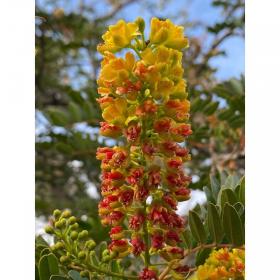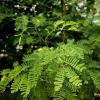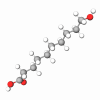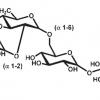Tara is the common name of the species Caesalpinia Spinosa. This species is native to Peru but is widely distributed throughout Latin America. It grows wild in the forests of the Andes. It withstands dry climates well and grows in sandy to stony soils.
Its fruits contain 4 to 7 seeds; 30% of each seed is composed of endosperm (albumen), the part of the nutritional reserve for the initial development of the embryo. This nutritive reserve consists of 80% mannose and galactose polysaccharides called galactomannans (the rest is water, proteins, minerals, and fiber), and a hydrocolloid or natural biopolymer known as Tara Gum is obtained.
Galactomannans
Galactomannans are large, high molecular-weight polysaccharides selected based on their natural hydrating function in the seed. They prevent the embryo from dehydration due to their high capacity to incorporate and retain water. Actually, they can contain up to 60% of the total water absorbed by the seed during the germination process. This is an adaptive response to its natural semi-arid environment. Their structure comprises lineal mannose chains connected by glycosidic bonds with randomly distributed side chains consisting of galactose residues.
Galactomannans from Caesalpinia Spinosa, in particular, have a 3:1 mannose:galactose ratio (Man:Gal) and relatively regular distribution of galactose along the main chain. These side-chain substitutions are responsible for their high water solubility. The higher the proportion of galactose, the higher the water solubility. A galactose proportion of 25% (ratio 3:1) results in good solubility even in cold water.Ingredients
Instant hydration
Since the galactomannans in the colloidal matrix cannot penetrate the skin because of their large molecular size, they remain on the stratum corneum surface, exerting an immediate fibrogenic moisturizing effect that gives the skin a more homogeneous appearance. When Tara gum is applied to the skin, the polysaccharides in the matrix immediately restrain the evaporation of transepidermal water and additionally retain part of the water contained in the cosmetic product.
The presence of numerous free hydroxyl groups (OH) in the polyol chemical structure of galactomannan and galacto-manno-oligosaccharides results in multiple hydrogen bonds with the water molecules. It is a simple but efficient mechanism that retains the water already present and the water contained in the product. In addition, the film that these compounds form on the skin also reinforces the moisturizing effect because it reduces the loss of water through perspiration.










